Light pollution is a growing environmental concern that often gets overshadowed by more visible forms of pollution. Creating drawings about light pollution is an excellent way to raise awareness, especially for students and environmental advocates. But what messages should you incorporate to make your artwork not just visually appealing but also impactful and educational? This comprehensive guide explores the top five messages you can add to your light pollution drawings to convey important environmental truths while creating compelling visual art.
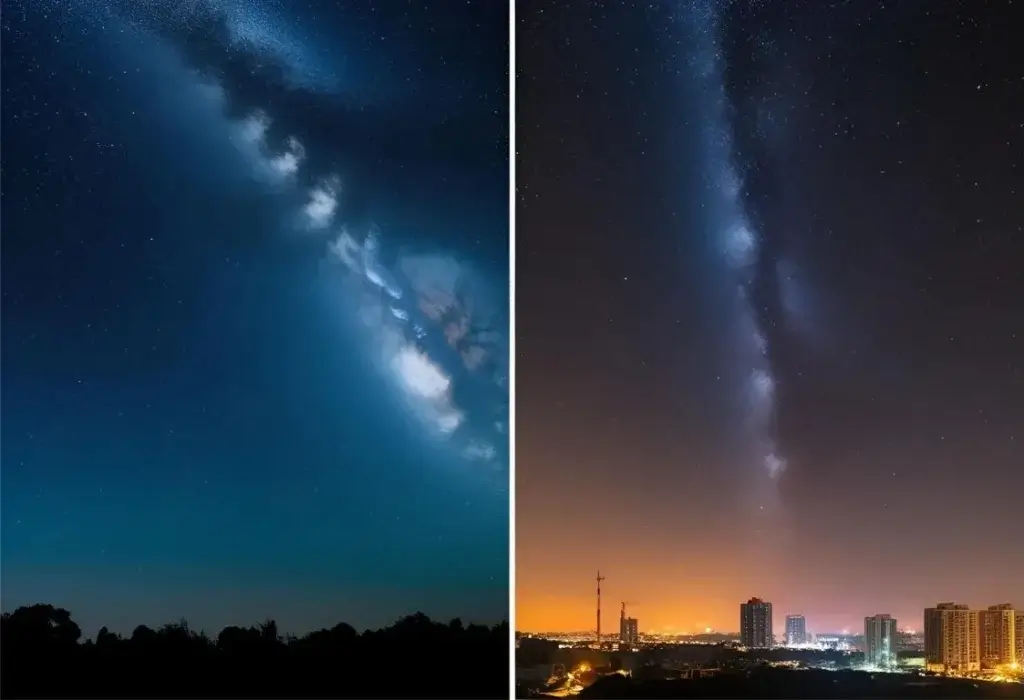
Introduction: Why Messages Matter in Light Pollution Artwork
Light pollution drawings serve a dual purpose: they’re artistic expressions and powerful educational tools. When created thoughtfully, they can transform complex environmental concepts into accessible visual stories that resonate with viewers of all ages. The messages you incorporate into your light pollution drawings determine whether your artwork merely looks good or drives meaningful awareness and action.
According to the International Dark-Sky Association, more than 80% of the world’s population lives under light-polluted skies. Yet, many people don’t understand the full impact of this growing problem. Your artwork can bridge this knowledge gap by communicating essential truths about light pollution through carefully crafted visual messages.
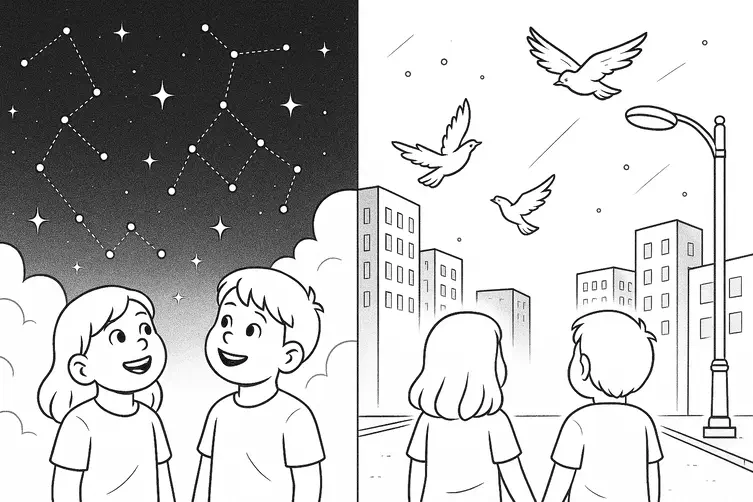
Whether you’re a student working on a school project, an artist with environmental concerns, or an educator teaching about pollution, incorporating these five key messages will elevate your light pollution drawings from simple illustrations to powerful advocacy tools. Let’s explore these messages and how to incorporate them into your artwork effectively.
Message #1: “We’re Losing Our Connection to the Night Sky”
One of the most profound impacts of light pollution is the gradual disappearance of our celestial heritage. For thousands of years, humans gazed at star-filled skies, navigated by constellations, and developed cultural stories around cosmic patterns. Today, artificial light has veiled this connection, with many urban dwellers never experiencing a truly dark sky.
Historical Context and Cultural Loss
Throughout human history, the night sky has played a central role in cultural development. Ancient civilizations, from the Mayans to the Egyptians, built entire calendar systems and mythologies around celestial observations. In your light pollution drawings, you can highlight this disconnection by contrasting historical stargazing with modern realities.
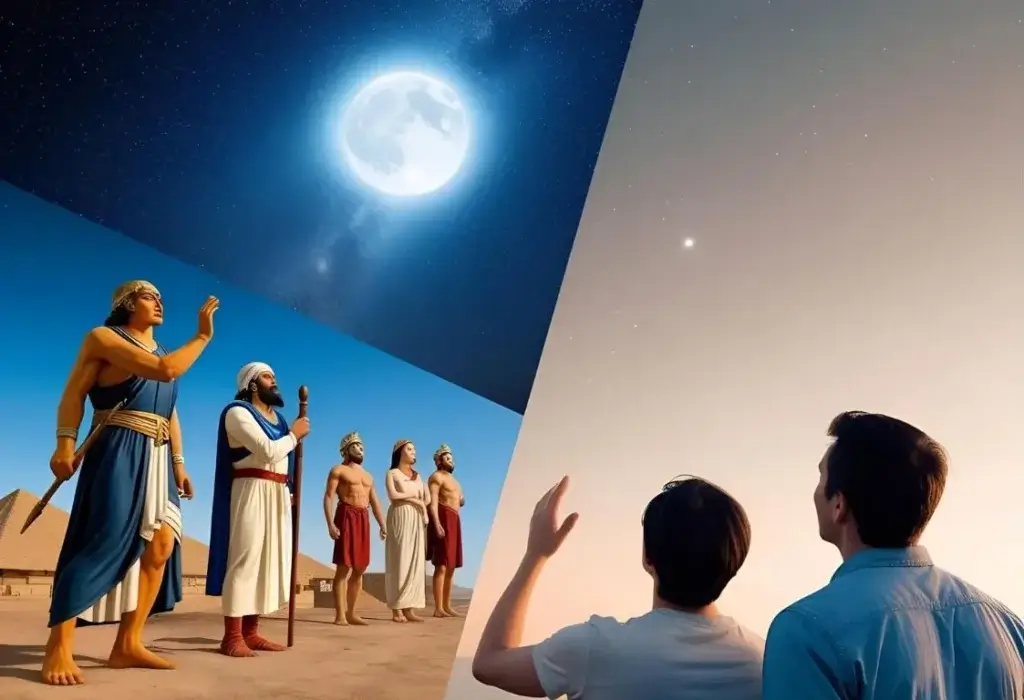
Consider creating a split-image drawing showing the same location in two time periods: perhaps an ancient observatory under a brilliant night sky juxtaposed with the same location today, where only a handful of stars are visible through the light haze. This before-and-after approach visually captures the cultural heritage we’re losing.
Visualization Techniques for This Message
To effectively communicate this message in your drawings:
- Use contrasting scenes of past vs. present sky visibility
- Incorporate human figures looking upward with different expressions (wonder in dark skies, confusion or disappointment in light-polluted settings)
- Include cultural symbols like constellations that are fading or partially visible
- Consider split-frame compositions showing what we should see versus what we see
A particularly effective technique is to show children looking up at a night sky with thought bubbles containing only a few stars while an older person remembers skies filled with cosmic wonders. This generational contrast emphasizes how quickly we’re losing this connection.
As astrophysicist Neil deGrasse Tyson noted, “We’ve engineered our way out of seeing the cosmos.” Your artwork can powerfully illustrate this engineering and its consequences.
Message #2: “Light Pollution Disrupts Ecosystems and Wildlife”
While humans can install blackout curtains or move away from brightly lit areas, wildlife has no such luxury. Light pollution fundamentally alters natural behaviors and disrupts ecosystems that evolved with the rhythm of natural day and night cycles.

Wildlife Impact Scenarios to Illustrate
Light pollution affects different species in various ways, providing rich material for your drawings:
- Sea Turtles: Newly hatched turtles follow the brightest horizon (naturally, the ocean reflecting moonlight) to find the sea. Artificial lights disorient them, leading them inland where they face predation or dehydration. Drawing baby turtles heading toward street lights instead of the ocean creates an immediately understandable and emotional image.
- Birds: Many birds migrate at night using celestial navigation. Light pollution, especially from tall buildings and communication towers, disorients them, causing fatal collisions. A drawing showing bird migration paths disrupted by city lights can effectively convey this problem.
- Insects: Artificial lights trap and kill billions of insects annually, disrupting food chains and pollination. Drawing a spiral of insects around a street lamp with predators waiting below illustrates this ecological trap.
Creating Emotional Connection Through Wildlife Depictions
When depicting wildlife in your light pollution drawings, focus on creating emotional resonance:
- Use expressive eyes and body language to humanize animal subjects without anthropomorphizing them
- Show direct cause-and-effect relationships between lights and animal behavior
- Consider sequential art techniques (multiple panels) to show the “before, during, and after” effects of light pollution on wildlife
- Include species that viewers in your region would recognize and care about
Research from the journal Science estimates that light pollution is increasing globally by at least 2% annually. Your drawings can put a face on the wildlife paying the price for this rapid change.
Message #3: “There Are Simple Solutions We Can All Implement”
Light pollution differs from many environmental problems because many solutions are relatively simple, immediate, and within individual control. Your drawings can not only highlight problems but also showcase practical solutions that inspire action rather than despair.
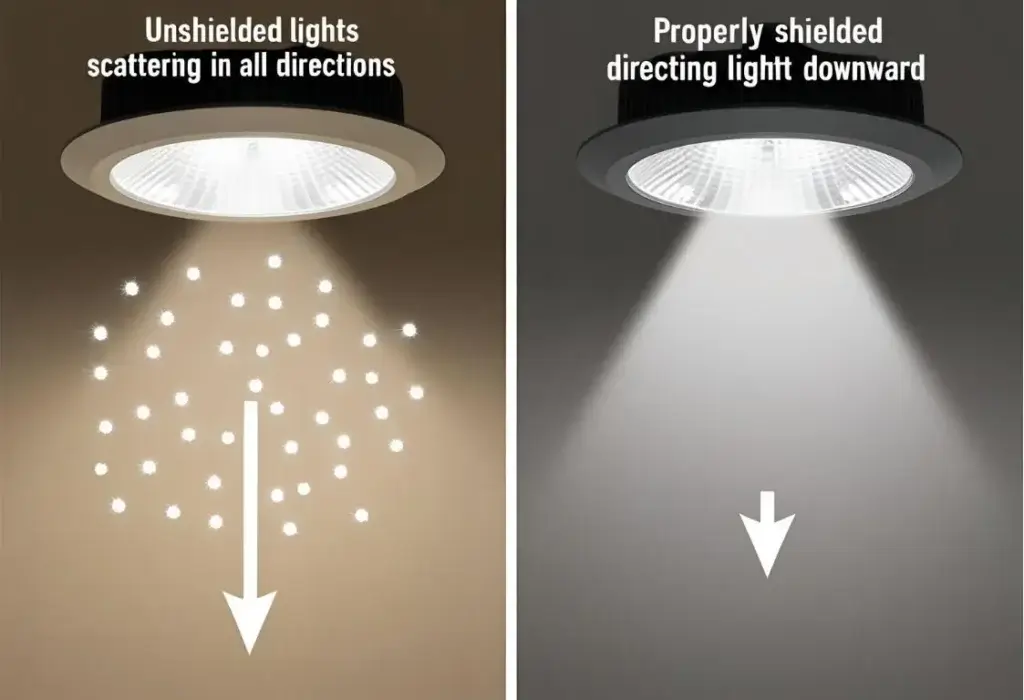
Artistic Depictions of Lighting Solutions
Turn your light pollution drawings into visual guides by incorporating these solution-focused elements:
- Before/After Scenarios: Split your drawing to show the same street or home with poor lighting versus proper shielded fixtures, demonstrating how directed light reduces pollution while maintaining functionality.
- Directional Arrows: Use visual cues like arrows to show how unshielded light wastefully scatters in all directions, while properly shielded fixtures direct light downward where needed.
- Timer Symbols: Incorporate clock faces or timer symbols to illustrate the concept of turning lights off when not needed or using motion sensors for security lighting.
- Color Temperature Indicators: Use color coding to show the difference between harsh blue-white light (more disruptive) and warmer yellow tones (less harmful to wildlife and human sleep).
Balancing Awareness with Actionable Hope
The most effective environmental art doesn’t just identify problems—it empowers viewers by highlighting solutions. Structure your light pollution drawings to spend approximately 70% on problem awareness and 30% on solutions to avoid creating eco-anxiety without resolution.
Consider incorporating visual metaphors like a hand reaching for a light switch or a person installing shielded lighting, reinforcing the message that individuals have the power to address this issue. The International Dark-Sky Association estimates that at least 30% of outdoor lighting in the U.S. is wasted, costing about $3.3 billion annually. Your artwork can show how simple adjustments save money while helping the environment.
Message #4: “Light Pollution Affects Human Health and Well-being”
Many people are unaware that excessive artificial light at night disrupts our biological rhythms and potentially impacts our health. Your light pollution drawings can connect these dots by visualizing the relationship between light pollution and human well-being.
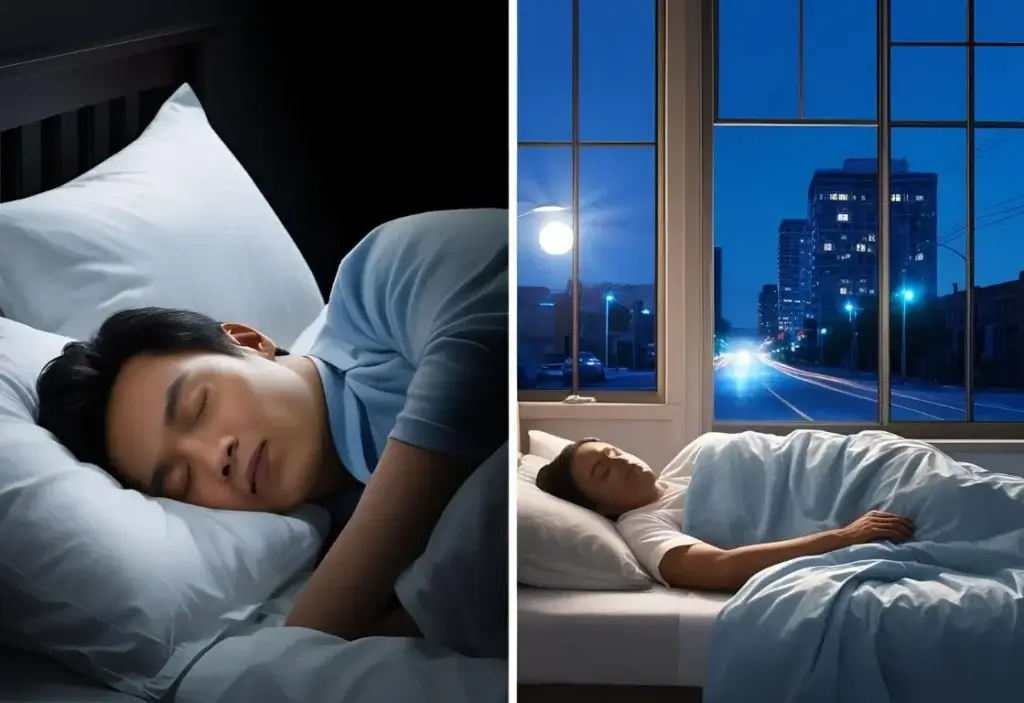
Visualizing Circadian Rhythm Disruption
Our bodies evolved with the natural cycle of daylight and darkness, developing circadian rhythms that regulate everything from sleep to hormone production. Consider these visualization approaches:
- Create human silhouettes with internal “body clocks” that appear synchronized in natural light/dark environments but chaotic in light-polluted scenarios
- Use color gradients shifting from natural blues and blacks of night to the artificial oranges and whites of light pollution washing over sleeping neighborhoods
- Draw split-scene comparisons showing the same person in different sleep states based on their nighttime light exposure
- Incorporate visual representations of melatonin production (perhaps as symbolic “sleep particles”) being suppressed by light pollution entering bedroom windows
Connecting Urban Lighting to Community Health
Research published in the journal JAMA Internal Medicine suggests links between outdoor light at night and various health issues, including sleep disorders, obesity, depression, and even some cancers. Your drawings can connect these dots:
- Create community-scale drawings showing neighborhoods with excessive lighting and visual indicators of insomnia or stress
- Use thought bubbles to show how bright streetlights shining through windows affect residents’ sleep quality
- Consider comparative illustrations showing the same street with excessive decorative lighting versus functional, shielded lighting that preserves darkness where people sleep
- Include informational elements about the World Health Organization’s classification of night shift work as a probable carcinogen due to circadian disruption
Health-focused light pollution drawings are particularly effective because they connect an abstract environmental concern to personal well-being, making the issue immediately relevant to viewers’ lives.
Message #5: “Dark Skies Preserve Scientific Discovery and Wonder”
Beyond environmental and health concerns, light pollution threatens humanity’s ability to explore and understand the cosmos. Astronomers increasingly struggle to conduct research, and future generations may grow up without experiencing the profound wonder of a truly dark, star-filled sky.
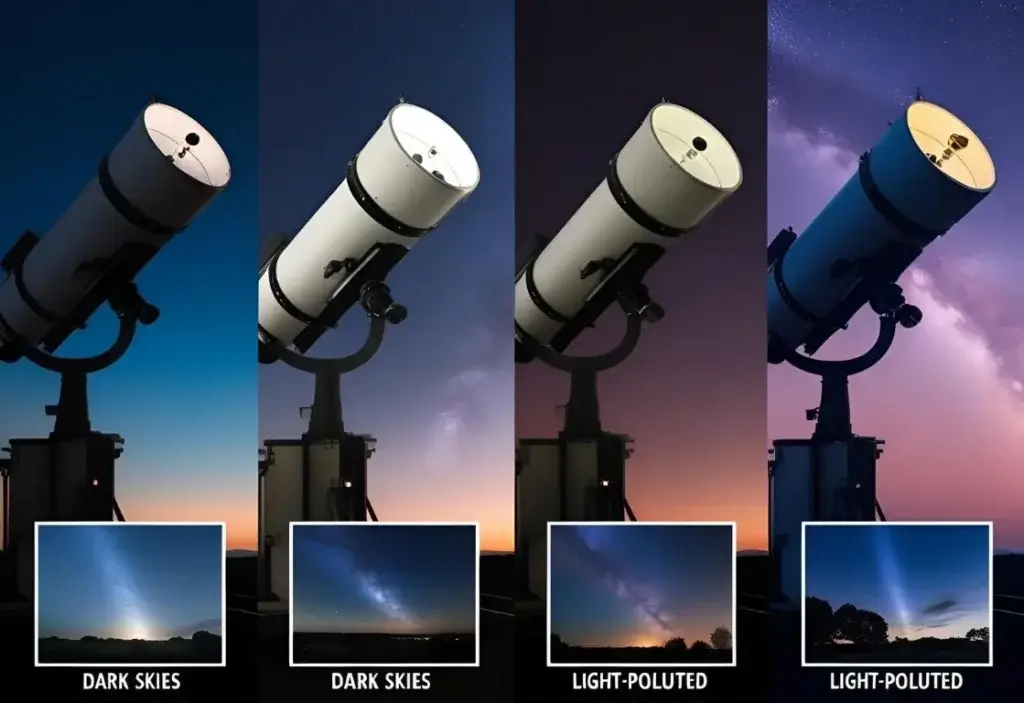
Scientific Discovery Under Threat
Professional and amateur astronomy relies on dark skies to observe celestial objects. Your artwork can highlight this loss:
- Draw observatories surrounded by encroaching city lights, with telescope views becoming increasingly obscured
- Create sequential panels showing how astronomical photography has changed over the decades as light pollution increases
- Illustrate comparisons between what powerful telescopes can see from dark locations versus light-polluted ones
- Include visual representations of discoveries that might be missed as observational astronomy becomes more difficult
According to the American Astronomical Society, nearly one-third of humanity cannot see the Milky Way from their homes due to light pollution. This scientific and cultural loss deserves visual representation in your drawings.
Inspiring Wonder and Curiosity
Perhaps the most powerful message your light pollution drawings can convey is the pure wonder of a dark sky—and why it’s worth preserving:
- Create emotionally resonant scenes of people experiencing their first truly dark sky, with expressions of awe and wonder
- Juxtapose children in urban environments looking up at almost-empty skies with those same children under dark skies having a transformative experience
- Use thought bubbles or dream sequences to show how dark sky experiences inspire future scientists, explorers, and conservationists
- Incorporate facts about astronomical phenomena most people never see (like the Milky Way’s full structure) because of where they live
Consider including a quote from astronomer Carl Sagan: “The cosmos is within us. We are made of star stuff. We are a way for the universe to know itself.” Your drawings can remind viewers that when we lose dark skies, we lose part of our cosmic connection.
👉 Don’t miss: What is Pollution? 4 Shocking Causes You Ignore Daily
Use your drawings to spark change, because the night sky deserves to be seen.
Conclusion: Creating Drawings That Drive Change
The most effective light pollution drawings combine artistic quality with clear, compelling messages that educate and inspire action. By incorporating these five key messages—our lost connection to the night sky, impacts on wildlife, available solutions, human health effects, and the preservation of wonder and discovery—your artwork becomes a powerful tool for environmental awareness.
As you create your light pollution drawings, remember that visual storytelling often succeeds where facts and statistics alone might fail. Images bypass intellectual defenses and connect directly with viewers’ emotions, making your artwork potentially more effective than written arguments alone.
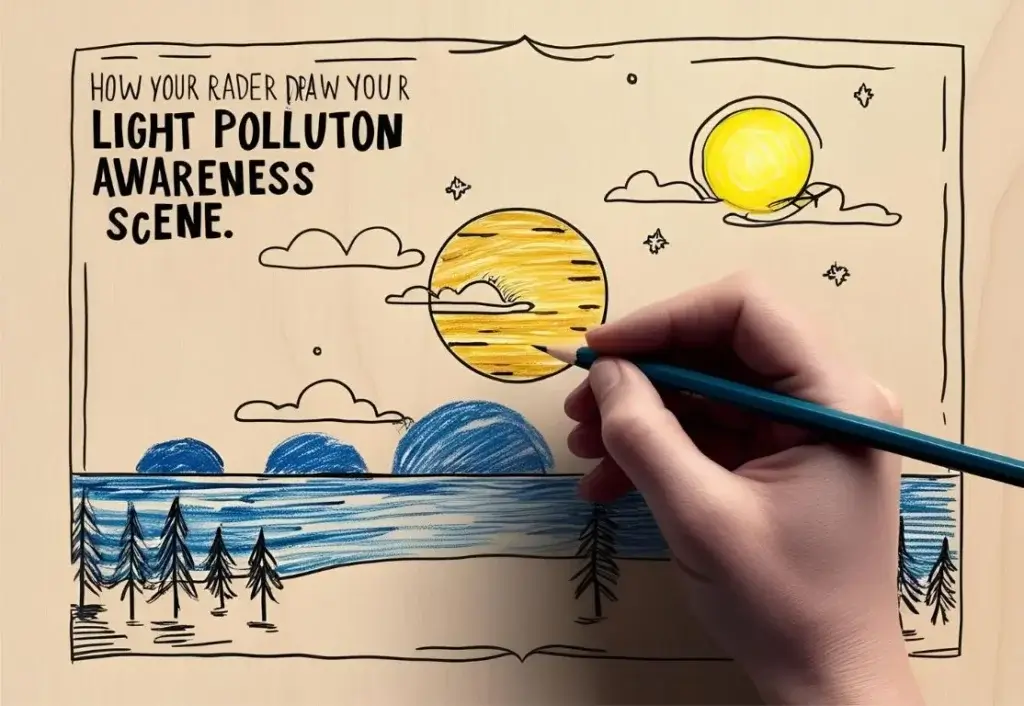
Consider how you might combine multiple messages in a single drawing or create a series that addresses each message individually but forms a cohesive narrative when viewed together. Whatever approach you take, focus on creating drawings that not only illustrate problems but also empower viewers to be part of the solution.
Are you ready to create light pollution drawings that truly make a difference? Which message resonates most strongly with you, and how might you visualize it in your next drawing? The night sky belongs to everyone, and your artwork can help preserve it for generations to come.
🗣️ Student Testimonial
“When I added the message about animals losing their way due to bright lights, my teacher said it made my drawing powerful. It helped me see how even art can speak for the environment!”
— Riya Mehta, Class 8, Pune
🎨 Teacher Testimonial
“One of my students used the ‘loss of stars’ message in her light pollution drawing, and it sparked a great classroom discussion about how we’re all missing out on the night sky. These messages make environmental topics feel personal and creative.”
— Mrs. Anjali Rao, Art Teacher, Bengaluru
Need a Summary or Quiz for Class?
📥 Download our free 👉 Top 5 Messages for Light Pollution Drawings with infographic, summary & mini-quiz
FAQs About Light Pollution Drawings
Q1: What is the purpose of adding messages to light pollution drawings?
A: Adding messages helps convey the environmental, cultural, and health impacts of light pollution, making the artwork more powerful and educational.
Q2: How can I choose the right message for my light pollution drawing?
A: Select a message that aligns with your drawing theme, such as protecting wildlife, preserving the night sky, or raising public awareness.
Q3: Can light pollution drawings be used for school projects or awareness campaigns?
A: Yes! These drawings are ideal for school exhibitions, science fairs, Earth Day events, and community awareness drives.
Q4: What are some common themes in light pollution awareness art?
A: Popular themes include stargazing vs. city lights, wildlife affected by light, dark sky preservation, and human health impacts.
Q5: How do I make my message stand out in the drawing?
A: Use bold text, contrasting colors, and visual metaphors like fading stars, confused animals, or glowing cities to highlight your message.
Q6: Are there any simple slogans I can include in my light pollution drawing?
A: Yes! Examples include “Save Our Stars,” “Too Much Light Is Pollution,” “Let the Night Be Dark,” and “Dark Skies, Bright Minds.”
Want to learn more about Light Pollution Drawing?
- 🌿 Light Pollution Drawing Every Student Should Know →
- 🐠 How to Make a Light Pollution Drawing for a School Project (Step-by-Step Guide)
- 🛠️ Light Pollution Drawing with Animals: Ideas Featuring Owls, Turtles & Bats: →
- 👉 Dark Sky Movement Explained Through Light Pollution Drawings
- Simple vs. Advanced Light Pollution Drawings: What’s the Difference? → will be coming to our site soon!
About the Author
Soumen Chakraborty is an environmental writer who is passionate about sustainable solutions. He has researched and written about environmental issues for two years, breaking complex topics into practical, actionable insights.
🌍 “Every small action matters in protecting our planet.”
📢 Loved this guide? Share your light pollution drawing on Instagram or Facebook with #DarkSkyArt and tag us! 📩 Contact via: ecoplanet@greenglobe25.in
📥 Download the Free Light Pollution Drawing Resource Pack
Want to reinforce your learning or use it in the classroom? Grab our free downloadable pack that includes:
- 📝 A printable summary of the top 5 light pollution drawing messages
- ✅ A mini quiz to test your knowledge or share with students
👉 Click here to download the Light Pollution Drawing Resource Pack (.zip)

